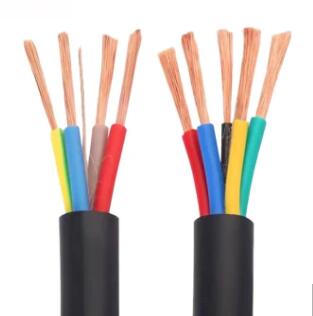Unraveling the Threads of Connectivity: The Primary Function of Electric Wires
2023-11-28
Introduction:
In the labyrinth of modern technology and infrastructure, electric wires are the silent threads that weave through our daily lives, connecting and powering the world around us. Their primary function is fundamental yet often overlooked. In this blog, we'll delve into the essential role of electric wires, understanding why they are the lifeblood of electrical systems and the backbone of our interconnected society.
The Fundamental Function:
At its core, the primary function of an electric wire is to facilitate the flow of electrical current between two points. Whether it's in our homes, offices, factories, or the vast power grids that span continents, electric wires serve as conduits for the movement of electrons, allowing the transfer of electrical energy from a source to a destination.
Key Components of Electric Wires:
1. Conductor:
The conductor is the heart of the electric wire, typically made of copper or aluminum. It provides a pathway for electrons to move, creating an electric current. The choice of conductor material is crucial, as it influences factors such as conductivity, resistance, and overall performance.
2. Insulation:
Surrounding the conductor is the insulation, a protective layer that prevents unintended contact with other conductive materials or surfaces. Insulation is crucial for ensuring the safety and reliability of the electrical system, guarding against short circuits and electrical shocks.
3. Jacket/Sheath:
In some cases, electric wires may have an additional outer layer known as a jacket or sheath. This protective covering shields the wire from environmental factors, such as moisture, chemicals, and physical damage. The jacket enhances the wire's durability and longevity.
Functions Beyond Conduction:
While the primary function of electric wires is to conduct electricity, they play several other vital roles in the functionality and safety of electrical systems:
1. Signal Transmission:
Electric wires are not limited to power transmission alone. They are also instrumental in transmitting signals, facilitating communication in various applications, including telecommunications, data transmission, and networking.
2. Temperature Regulation:
Some electric wires are designed to withstand high temperatures. This feature is especially important in applications where heat resistance is crucial, such as in industrial settings or automotive wiring.
3. Power Distribution:
Electric wires form the backbone of power distribution systems, ensuring that electricity generated at power plants reaches homes, businesses, and various points of consumption. They enable the efficient transfer of electrical energy across vast distances.
4. Connection and Interconnection:
Wires serve as the connectors in electrical circuits, bridging the gap between different components. Whether it's connecting a light switch to a lamp or linking electronic devices in a complex circuit, wires are the conduits that make these connections possible.
Conclusion:
In essence, the primary function of an electric wire is to establish a pathway for the movement of electrons, enabling the flow of electrical current. This seemingly simple role, however, underpins the vast and intricate networks that power our world. As technology advances and our reliance on electrical systems grows, the significance of electric wires becomes even more pronounced. Understanding their fundamental function allows us to appreciate the crucial role they play in powering the present and shaping the electrified future that lies ahead.



